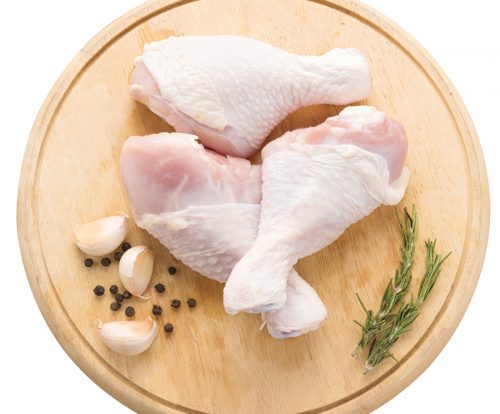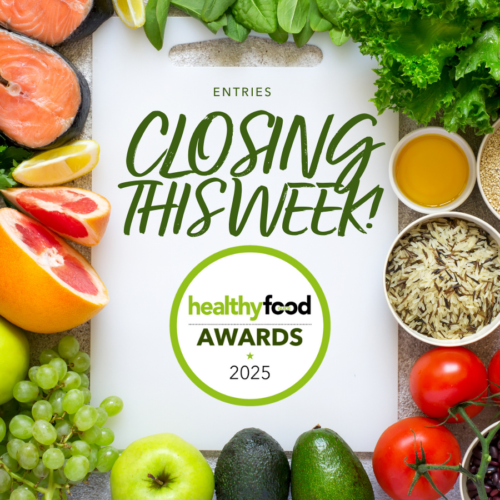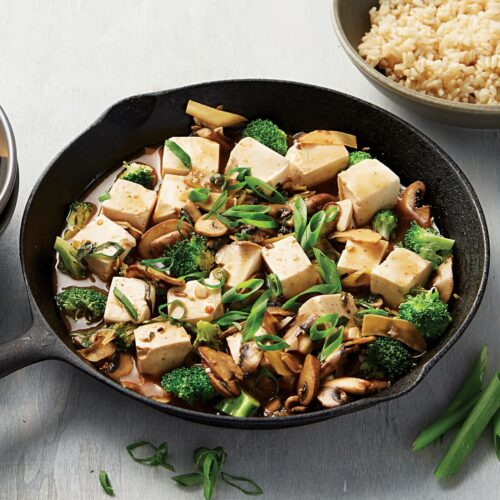
Chicken is a hugely popular protein. Here are some tips on how to buy better when you shop for this versatile ingredient.
The light flavour of chicken makes it a great meat to have with a wide variety of dishes, from curries to stir-fries, roasts to salads.
Over 50 per cent of us eat chicken once or twice a week, with nearly 30 per cent of us eating chicken more than three times weekly.
Lean chicken is a great source of protein and iron. Chicken can easily be made even healthier by removing the skin before cooking, reducing the saturated fat. Dark chicken meat, found on the thigh and leg, is higher in iron than pale breast meat. As with other animal proteins, chicken is also a good source of vitamin B12.
Research suggests a link between excessive red and processed meat consumption and an increased risk of colon cancer, however, this isn’t seen with chicken intake. But be careful, as processed or seasoned chicken products may be higher in sodium and saturated fat, so are not as good for your heart.
A serving of chicken is a small chicken breast, around the size and thickness of the palm of your hand (125g-150g).
| Nutrition | 125g skinless chicken breast | 125g skinless chicken thigh |
|---|---|---|
| KJ | 570KJ | 610KJ |
| protein | 28g | 24g |
| sat fat | 0.9g | 1.8g |
| iron | 0.7mg | 1.3mg |
What’s on the label?
Organic
Organic chicken has been raised without using chemicals or antibiotics. All parts of the process are traceable to ensure the chicken has been raised and prepared without chemicals. Look for the Certified Organic label to make sure it really is organic. Studies have shown that organic chicken may be more tasty than non-organic, although less tender, and higher in iron.
Free range
Free-range chickens are able to roam free for at least some of the day. Free-range chicken meat may be less fatty than meat from caged chickens. Chicken without an organic or free-range label has generally been cage reared.
Animal welfare
Look for the SPCA blue tick on chicken products. This means animal products have been farmed to a high standard of animal welfare.
How to store and prepare chicken
- Raw chicken is a high-risk food. Bacteria such as campylobacter or salmonella are common in chicken and can cause food poisoning. Don’t wash raw chicken, as this increases the chance of bacteria spreading across other food and dishes. Cook chicken until it is cooked through and discard any chicken if it’s not cooked properly.
- In the summer months, enjoy chicken on the barbecue by pre-cooking it in the oven first, to make sure it’s cooked through, then finish off on the barbecue for char and extra colour.
- Fresh chicken can be safely stored in the fridge (2°C to 4°C) for one to two days, or in the freezer (-15°C to -18°C or less) for up to nine months. Cooked chicken can be safely stored in the fridge for three to four days.
- Store chicken on the bottom shelf of the fridge so any leaked juices don’t contaminate other food.
How to cook different cuts
Chicken is very versatile. Chicken breast meat cooks quicker than thigh or drumsticks but can be dry if overcooked. Don’t overfill the pan if you’re stir-frying chicken. This reduces the heat and causes more juices to be released from the meat, so you’re stewing instead of sealing it.
stir-fry: chicken breast
pan fry: chicken breast, chicken bacon* roast or bake in the
oven: whole chicken, chicken drumsticks or chicken nibbles
slow cook, stew or curry: chicken drumsticks or thighs
barbecue: butterfly chicken, chicken kebabs, chicken burgers, chicken sausages*
* Choosing processed or marinated chicken:
Check it’s 4g sat fat or less and 650mg or less sodium per 100g
Did you know?
Growth hormones aren’t used in the production of any chicken in New Zealand, Australia and the EU, but it’s highlighted on some packaging as the myth that they are used persists. Antibiotics may be used, but only under the supervision of vets.
Article sources and references
- Castellini C et al. 2002. Effect of organic production system on broiler carcass and meat quality. Meat Science 60:219-25https://www.ncbi.nlm.nih.gov/pubmed/22063392
- English DR et al. 2004. Red meat, chicken and fish consumption and risk of colorectal cancer. Cancer Epidemiology, Biomarkers and Prevention 13:1509-14https://www.ncbi.nlm.nih.gov/pubmed/15342453
- Health Navigator. Campylobacter, healthnavigator.org.nz Accessed September 2018https://www.healthnavigator.org.nz/
- Holcman A et al. 2003. Chemical composition of chicken meat from free range and extensive indoor rearing. Archiv fur Geflugelkunde 67:120-4https://www.european-poultry-science.com/Chemical-composition-o,QUlEPTE1MjQzJk1JRD0xNjEwMTQmQVJPT1Q9MzAzNyZURU1QX01BSU49U2NpZW50aWZpY3NfUG9ydHJhaXQuaHRtJkFJRD0xNTI0MyZNSUQ9MTYxMDE0JkFST09UPTMwMzcmVEVNUF9NQUlOPVNjaWVudGlmaWNzX1BvcnRyYWl0Lmh0bQ.html
- Lippi G et al. 2015. Meat consumption and cancer risk: A critical review of published metaanalyses. Critical Reviews in Oncology/Hematology 97:1-14https://www.ncbi.nlm.nih.gov/pubmed/26633248
- University of Otago and Ministry of Health. 2011. A Focus on Nutrition: Key findings of the 2008/09 New Zealand Adult Nutrition Survey. Wellington: Ministry of Healthhttps://www.health.govt.nz/publication/focus-nutrition-key-findings-2008-09-nz-adult-nutrition-survey
- University of Otago News. 17 April 2018. Safety Warning Labels Needed on Fresh Chicken, Say Researchers, otago.ac.nz Accessed September 2018https://www.otago.ac.nz/news/news/releases/otago683426.html
www.healthyfood.com










